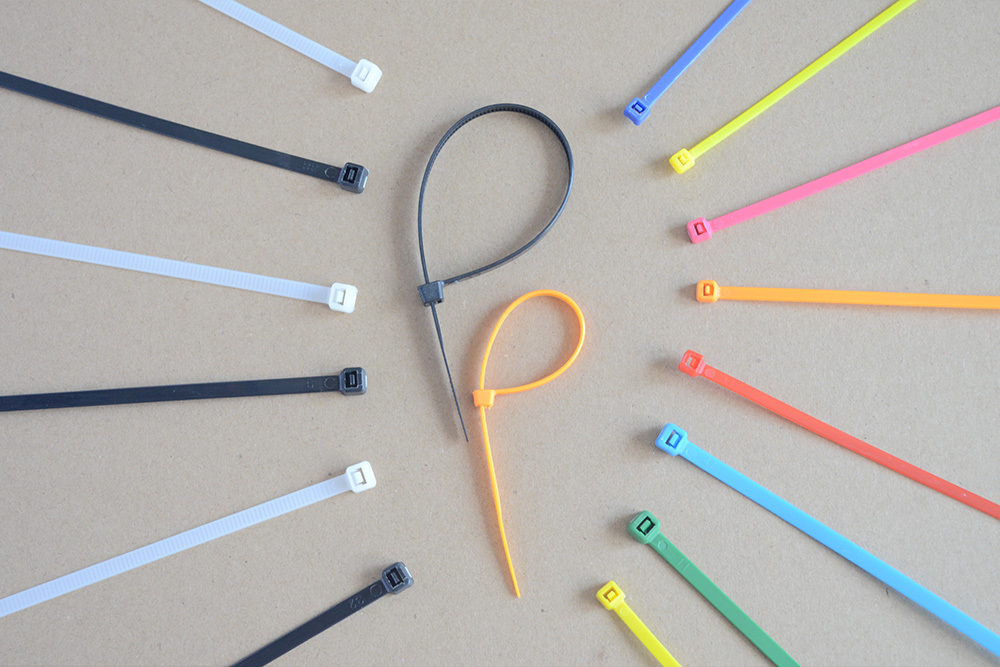15
2025
-
07
Key points for using plastic cable ties in high-temperature environments
Author:
Key Considerations for Using Plastic Cable Ties in High-Temperature Environments
Plastic cable ties are widely used for bundling and securing items, but their performance in high-temperature settings requires careful attention to material selection, application methods, and safety protocols. Here’s a detailed guide to ensuring reliability and longevity when using cable ties in extreme heat.
Understanding Temperature Resistance Limits
Standard nylon cable ties, typically made from nylon 66, are designed to withstand temperatures ranging from -40°C to 85°C without significant degradation. However, in environments where temperatures exceed this range—such as near engines, industrial machinery, or outdoor locations exposed to direct sunlight—standard ties may soften, deform, or lose tensile strength.
For applications involving prolonged exposure to heat, prioritize cable ties rated for higher temperatures. Some advanced formulations, such as those reinforced with heat-stable polymers or additives, can tolerate temperatures up to 150°C or more. These specialized ties maintain their structural integrity even under intense thermal stress, making them suitable for automotive, aerospace, or manufacturing sectors.
Selecting the Right Material for High-Heat Applications
The choice of material significantly impacts a cable tie’s ability to resist heat. Nylon 66, while durable in moderate conditions, may not suffice for extreme environments. Instead, consider alternatives like:
- Polyetheretherketone (PEEK): A high-performance polymer capable of enduring temperatures up to 260°C, PEEK-based ties are ideal for aerospace, semiconductor manufacturing, or chemical processing.
- Polyphenylene Sulfide (PPS): With a continuous service temperature of 240°C, PPS ties resist thermal aging and chemical corrosion, making them suitable for automotive under-the-hood applications.
- Heat-Stabilized Nylon: Modified with additives to enhance thermal resistance, these ties bridge the gap between standard nylon and high-performance polymers, offering reliable performance up to 120°C–150°C.
Proper Installation Techniques to Prevent Failure
Even heat-resistant cable ties can fail if improperly installed. Follow these guidelines to ensure optimal performance:
- Avoid Over-Tightening: Excessive tension can stress the tie’s locking mechanism, especially when combined with heat expansion. Leave a small gap (5–8 cm of excess strap) to accommodate thermal contraction and expansion.
- Use Tensioning Tools: Manual tightening may lead to inconsistent force application. Tools like tensioners or cutters help achieve uniform pressure, reducing the risk of over-tightening or under-tightening.
- Protect from Direct Flame or Hot Surfaces: Even heat-resistant ties can melt if in direct contact with flames or scorching surfaces. Maintain a safe distance from heat sources and use insulating materials if necessary.
Environmental Factors Influencing Performance
High temperatures often coincide with other environmental stressors that affect cable tie durability:
- UV Exposure: Prolonged sunlight can degrade polymers, even in heat-resistant ties. For outdoor applications, choose ties with UV stabilizers to prevent brittleness and discoloration.
- Chemical Exposure: Certain chemicals, such as solvents or oils, can weaken ties when combined with heat. Verify compatibility with the operating environment to avoid accelerated degradation.
- Humidity: While moisture alone doesn’t significantly impact heat resistance, high humidity in hot environments can promote mold growth or chemical reactions. Store ties in a cool, dry place and inspect them regularly for signs of damage.
Monitoring and Maintenance in High-Temperature Settings
Regular inspections are crucial to identifying early signs of wear or failure in heat-exposed cable ties. Look for:
- Discoloration or Warping: A yellowish tint or bent shape indicates thermal damage.
- Reduced Tension: If ties feel loose or stretch easily, they may have lost strength due to heat exposure.
- Cracking or Brittleness: This suggests the material has exceeded its thermal limits and should be replaced immediately.
Replace compromised ties promptly to prevent equipment damage or safety hazards. In critical applications, consider using redundant ties or alternative fastening methods for added security.
By understanding the limitations of plastic cable ties in high-temperature environments, selecting appropriate materials, and following best practices for installation and maintenance, users can ensure reliable performance even under extreme conditions. Whether securing wiring in an industrial facility or organizing components in an automotive engine bay, these strategies help maximize the functionality and safety of cable ties in heat-intensive applications.
plastic cable ties
Previous Page
Previous Page
Hot News
2025-07-18
Circular binding method with plastic cable ties
Plastic cable ties are versatile tools for creating secure loops around cylindrical or irregularly shaped items. Mastering circular binding ensures stability in applications ranging from organizing cables to securing hoses or tools.
2025-07-18
Hidden binding techniques for plastic cable ties
Plastic cable ties are widely used for securing items, but visible ties can disrupt aesthetics in design-focused projects or cluttered spaces. Mastering hidden绑扎 (binding) methods ensures functionality without compromising visual appeal.
2025-07-17
Quick binding steps for plastic cable ties
Plastic cable ties are essential for organizing cables, securing bundles, or fastening objects efficiently. Mastering quick绑扎 (binding) techniques ensures projects are completed faster while maintaining strength and reliability. Below are clear, actionable steps for rapid and effective use.
2025-07-17
Precautions for using plastic cable ties at high temperatures
Plastic cable ties are widely used for securing and organizing items, but their performance can degrade under extreme heat. To ensure safety and functionality, users must account for material properties, environmental factors, and application-specific demands when operating in high-temperature settings.

